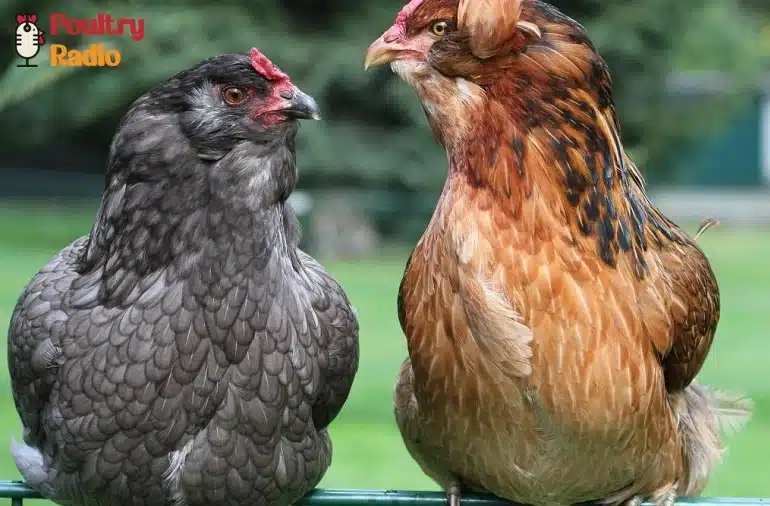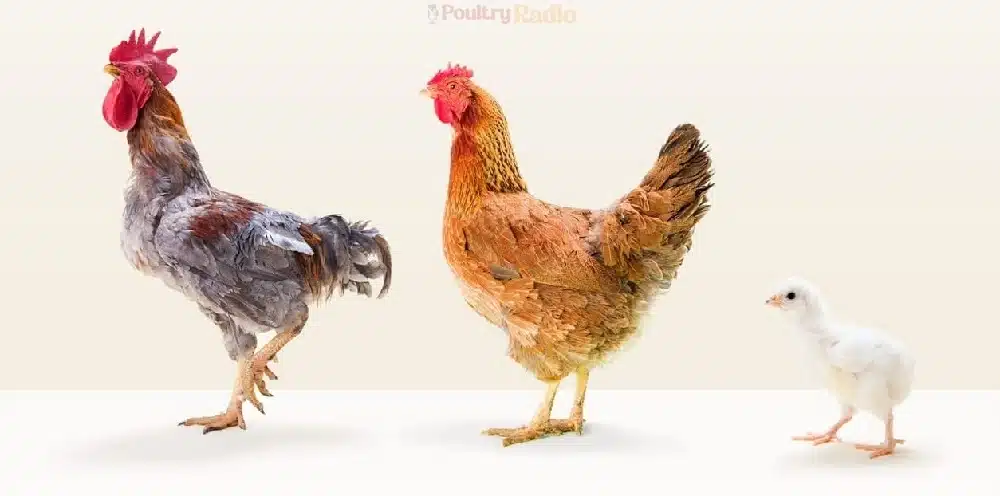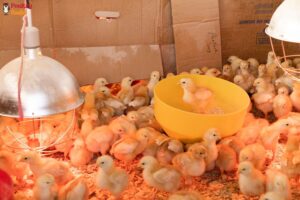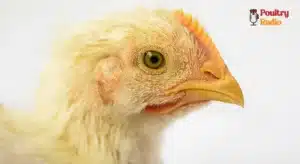Chicken Mating Process: Fascinating Facts You Need to Know
Welcome to our latest blog post where we delve into the intriguing world of chicken mating behavior. From intricate courtship rituals to surprising chicken mating strategies, the realm of
“poultry romance is anything but ordinary”.
Whether you’re a curious hobbyist, a seasoned farmer, or simply someone with an interest in the natural world, there are plenty of surprising insights to discover. Join us as we explore the fascinating facts and behaviors that shed light on this essential aspect of chicken life.

Introduction
Did you know that roosters face a bit of a challenge in the romance department? Their male reproductive anatomy is all inside their bodies, which makes the whole process quite a physical feat. It might not be the most graceful sight, and onlookers might not even realize what’s happening when they witness chicken mating, as it all happens in a matter of seconds. It’s quite remarkable that it works at all, considering the absence of the usual male appendage!
Courting the Hen: How Roosters Attract Hens
Before mating, roosters engage in charming courtship behavior to catch the eye of the hens. This behavior serves as a way for roosters to show off their strength and appeal to potential partners.
Roosters often puff out their chest, fluff their feathers, and make sounds to grab the attention of the female chickens. They may also offer small bits of food to the hen in a behavior called “tidbitting,” showcasing their ability to provide and win her over.
Some roosters may not bother trying at all – they just take charge of their mate. But the more romantic fellas have a few go-to moves that they rely on to dazzle the females (Hen), and these can include any of the following:

The Matador
This special rooster move is all about catching a hen’s eye and captivating her with his impressive size and beauty. The rooster gracefully flutters his wings as he dances around her, just like a matador swirling his cape to charm a bull. I came up with that name, but you might hear it called: the wing drag, wing drop, or wing flicking.
The Rooster’s Dance (Chicken Mating Dance)
When it comes to chicken mating, roosters have a special mating dance to charm the hens. This dance involves a mix of movements and displays designed to court the females. The rooster might begin by circling the hen, stretching his neck, and lowering his wings, often accompanied by gentle clucks or calls.
In response, the hen may crouch down and move her tail feathers to show her willingness to mate. The rooster’s mating dance is a natural behavior that helps build a connection between male and female chickens.
Tidbitting “Sharing Treats”
Sharing real or imaginary bits of food to attract the hen’s attention for mating is a classic move. When she comes over to see what’s going on, that’s when he makes his move.
Male Mating Organ
It’s time for some extra details! Did you know that a rooster’s sexual organ is called the papilla? It’s located inside the bird, just within the wall of his cloaca. It’s a small bump that looks different from a penis and serves a different function, except for the fact that semen exits through it.
Note: Lets explore the tremendous World of Cockfighting
The Chicken Mating Process: How do Chickens Mate?
So, ever wonder how they make it happen? Well, the rooster gets into position, kind of like a piggyback ride, standing on her back, gripping her neck feathers with his beak, and balancing with his feet. This activity is called treading. Meanwhile, the hen crouches down, spreads her wings for balance, and lowers her tail into a position I call the COMPLIANT SQUAT.
Since the papilla is inside his cloaca (vent area), his cloaca needs to touch hers to transfer sperm from his body to hers. This touching of cloacas is often called the ‘cloacal kiss.’ And that’s it – he hops off, she shakes out her feathers, and they both go about their business. Ah, love is a beautiful thing, isn’t it.”
Wearing a cloth apron, also known as a Hen Mating Saddle, can help protect hens from feather damage, bald spots, and skin damage caused by frequent or aggressive treading.
Frequency of Roosters and Chickens Mate
Your birds’ mating frequency and success depend on their characteristics, age, breed, and season. Typically, a rooster can mate multiple times per day during peak season, with around 60 percent of these mattings resulting in successful fertilization. However, various factors can influence these numbers.
The number of hens in your flock is a significant factor in determining how often your birds mate. Roosters can be quite active and may mate up to 30 times a day. With a larger number of hens, your rooster will have more opportunities to engage in this behavior.
Of course, some roosters are more romantically inclined than others, or more drawn to specific hens, and some hens are more open to accommodating a rooster’s frequent attention. Just like humans, each bird has their romantic inclinations and preferences, and there isn’t much you can or should do to change that.
Chicken Mating Season
Birds are most likely to mate in the spring and less likely to mate in the winter. Generally, the hotter the weather, the more romantic your chickens will get. However, roosters are ready to mate all year round, so don’t be surprised to see some lovebirds even on the coldest days.

Allowing your chickens to mate is a great way to build a self-sustaining flock of happy, healthy birds. It might seem puzzling at first, but with time, you and your feathery friends will easily navigate the world of poultry romance.
Frequently Asked Questions
Do Roosters Have a Penis and Balls?
Roosters don’t have an external penis like mammals do. A rooster’s sexual organ is called the papilla. It’s located inside the bird, just within the wall of his cloaca. It’s a small bump that looks different from a penis and serves a different function, except for the fact that semen exits through it.
How do Chickens Mate?
A rooster often engages in foreplay by prancing around the hen and clucking before mounting her. Sperm transmission occurs swiftly, without the penetration that is typical of mammalian mating. The male and female cloacas, or vents, come into contact and exchange sperm.
Do Hens Get Pregnant After Mating?
Unlike mammals, hens do not go through pregnancy. After successful mating, if the rooster’s sperm fertilizes the hen’s eggs, she will lay fertile eggs. These eggs have the potential to hatch into chicks when properly incubated. Hens can store sperm within their reproductive system for appx 10 days, allowing for multiple egg-laying cycles to be fertilized.
Do Chickens Have to Mate to Lay Eggs?
Chickens don’t need a mate to lay eggs. Hens can lay eggs consistently, even without a rooster around. These unfertilized eggs are still healthy and can be eaten or used for cooking. But without a rooster, these eggs won’t be able to develop into chicks.
What is the Mating Position of Chickens?
The rooster gets into position, kind of like a piggyback ride, standing on her back, gripping her neck feathers with his beak and balancing with his feet. This activity is called treading.
What is the Mating Pattern of Chickens?
Roosters can mate anywhere from 10 to 30 times or even more in a day, depending on the number of hens around and the competition from other roosters. Nevertheless, the quantity of sperm released during each mating is rarely below 100 million, which is essential for maintaining high fertility.
Summary
In conclusion, the intricate world of chicken mating behavior is truly an eye-opener for anyone interested in the natural world. From the physical feats of roosters to the charming courtship behaviors they display, there’s much to learn and appreciate about poultry romance.
The courtship rituals, including the iconic Matador move and the Rooster’s Dance, demonstrate the male’s efforts to attract and court the hens, reflecting the unique and fascinating aspects of chicken mating behavior. Understanding the frequency and success of mating, as well as the factors that influence it, provides valuable insights for poultry enthusiasts. As we reflect on the captivating nature of chicken mating, it becomes clear that these behaviors play a significant role in the dynamics of flock interaction and breeding success.
Whether you’re a curious hobbyist or an experienced farmer, these intriguing facts shed light on a crucial aspect of chicken life, making the world of poultry romance anything but ordinary.
Looking for breeds of chickens? Try our articles on:







